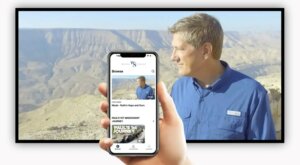“In a ceremonial nod to Purim, the Israel Antiquities Authority has disclosed to the public a ceramic jar fragment bearing a human face and dating back to the Persian period (4th-5th centuries BCE) that was discovered in 2019” in Jerusalem.
A high school student found an oil lamp at Mezad Tzafir that is nearly identical to one discovered by Nelson Glueck ninety years ago at the same location.
Archaeologists discovered a mastaba in an Old Kingdom necropolis at Dahshur.
“Archaeologists in Pompeii have unearthed an ancient building site that sheds light on construction techniques used by the Romans to make iconic structures such as the Colosseum and the Pantheon.”
“The only surviving funerary relief of the ancient Greek world depicting twin babies in the same arms was unveiled at the National Archaeological Museum of Athens and will be exhibited only for a few weeks.”
“The British Museum went to court Tuesday against a former curator alleged to have stolen hundreds of artifacts from its collections and offered them for sale online.”
Kazuyuki Hayashi, a professor at Bethel Seminary, has been a supervisor at the Tel Shimron excavation since 2017.
Juan Tebes has been studying pilgrimage routes in the Levant and Hijaz.
Conflicting Jewish traditions place the tomb of Esther and Mordecai in Iran and Israel.
David Moster cut open an old pair of tefillin (phylacteries) to see what Scriptures are inside.
David Hendin, an expert in biblical coins, was interviewed on the Ancient Coin Hour.
Thomas Levy has been honored with a two-volume festschrift featuring research by more than 140 friends and colleagues. (It is a bit pricey, but chapters are available individually.)
The latest issue of Israel Museum Studies in Archaeology is online. One of the articles presents three architectural models from the museum’s collection.
Available for pre-order on Logos: Pondering the Spade: Discussing Important Convergences between Archaeology and Old Testament Studies, by David B. Schreiner
Webinar on April 4: “How did the dead die in Ancient Judah? Death as a social process in Iron Age tombs,” by Matthew Suriano
Webinar on April 18: “Amorites, Their Origins, and Their Legacy,” by Aaron Burke
Sara Japhet, longtime professor at Hebrew University, died this week.
“‘Art of Intimidation: Journey to Ancient Assyria’ is the Harvard Museum of the Ancient Near East augmented-reality Snapchat lens that brings to life the large casts of sculpted panels from the famed royal palaces of ancient Nineveh and Nimrud.” A video shows how it works.
For the Purim holiday, The Times of Israel profiles a 78-year-old baker who runs the last-of-its-kind Iraqi pastry shop in Israel.
A video of colorized footage from around the world in 1896 includes Jerusalem’s Jaffa Gate, Church of the Holy Sepulcher, West Jerusalem, and train station (start at 2:38).
Leen Ritmeyer explains how the tomb of Jesus was sealed.
Bible Archaeology Report proposes the top ten finds related to the death and resurrection of Jesus.
HT: Agade, Paul Mitchell, Arne Halbakken, Paleojudaica
